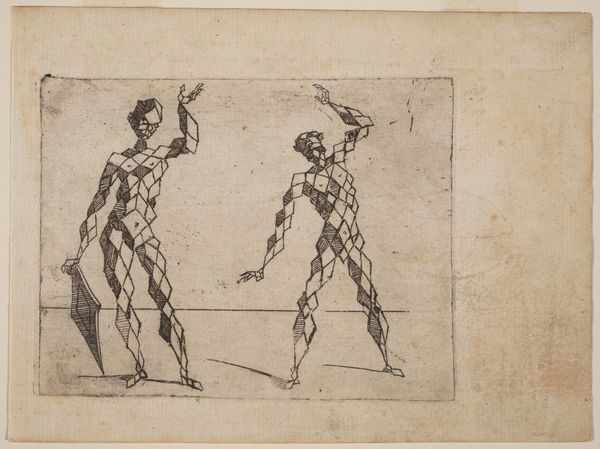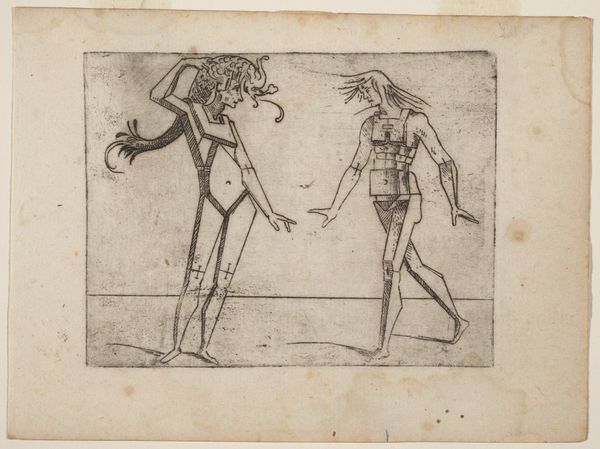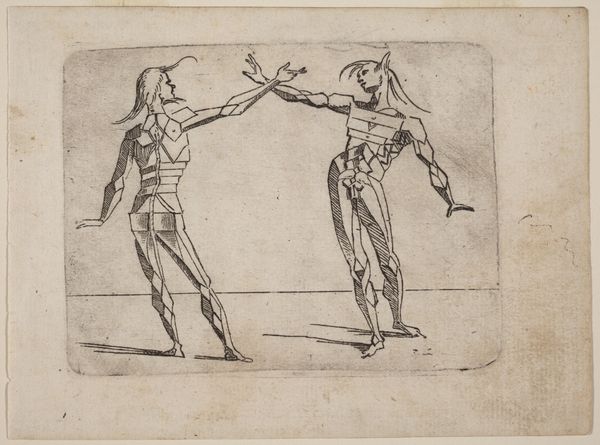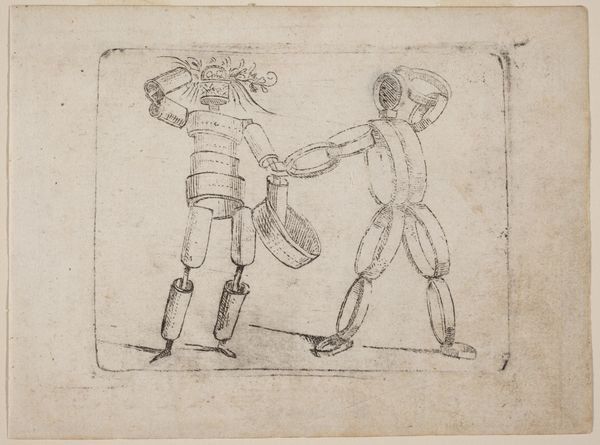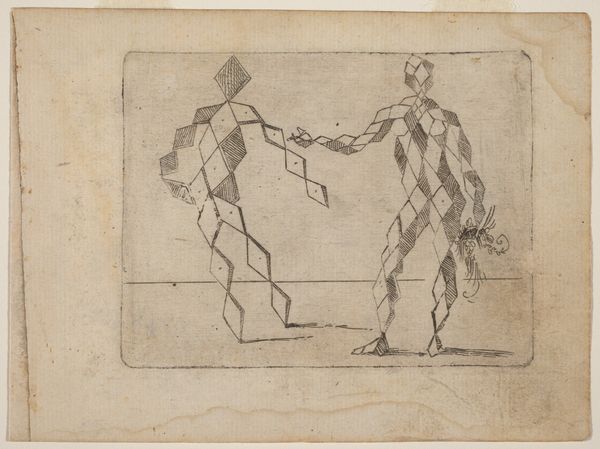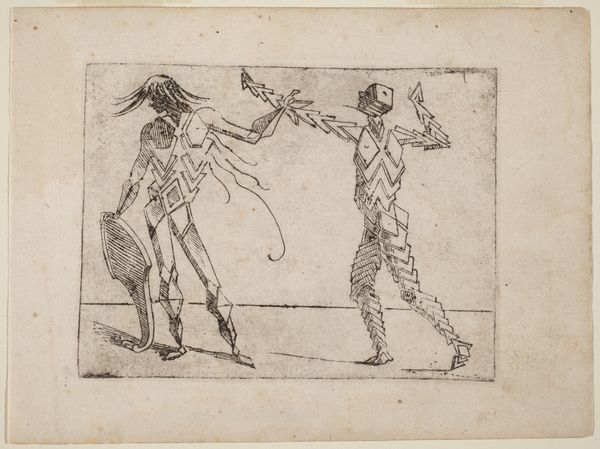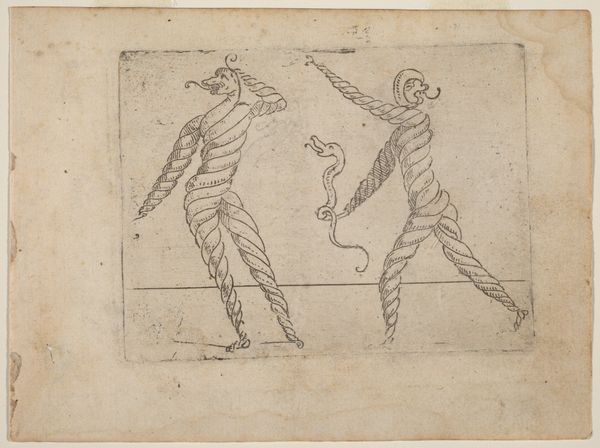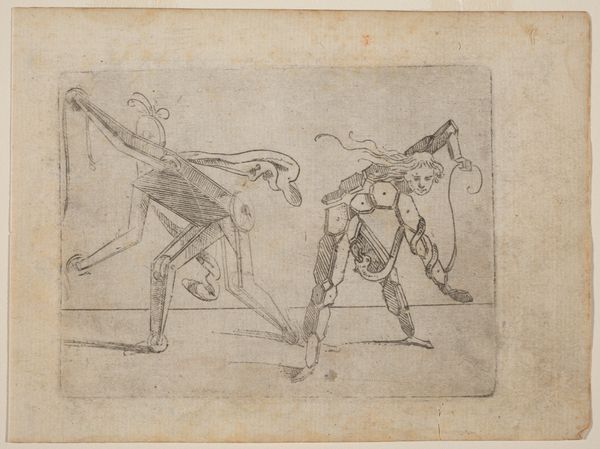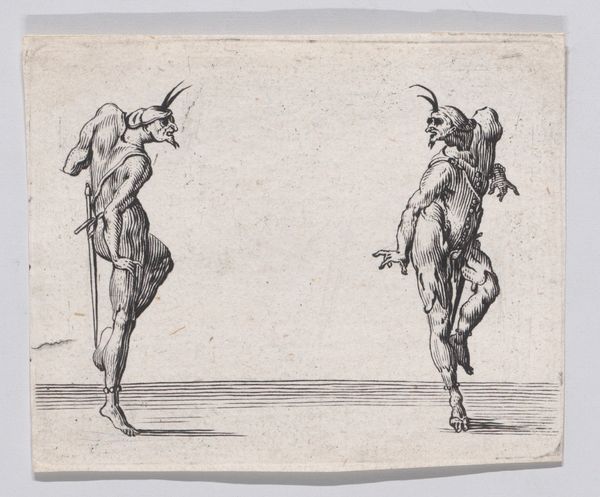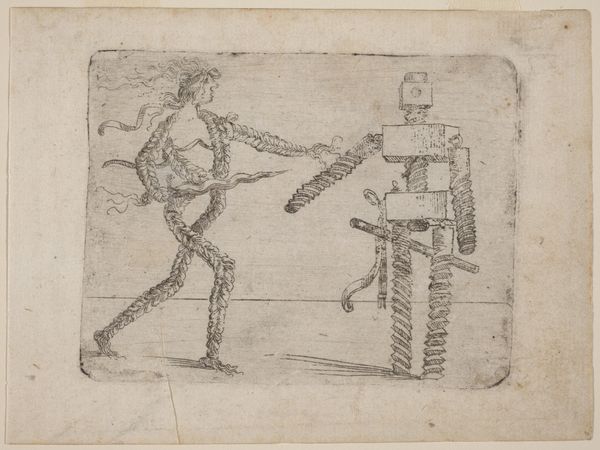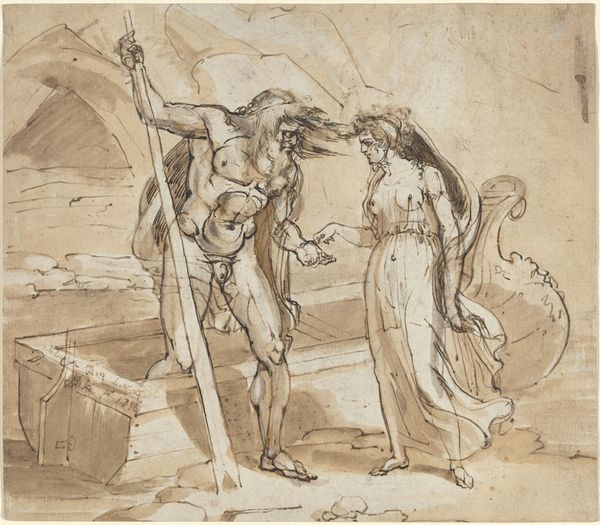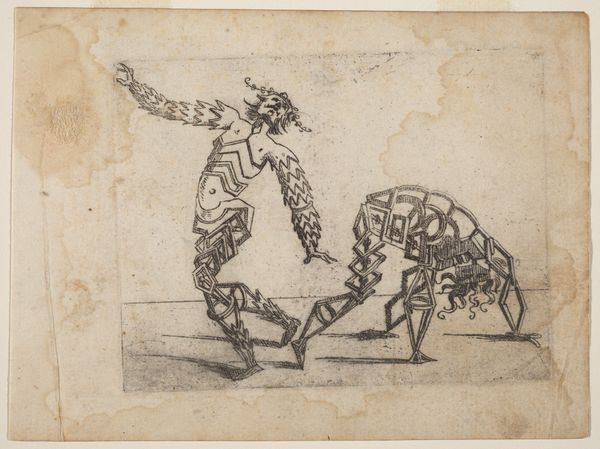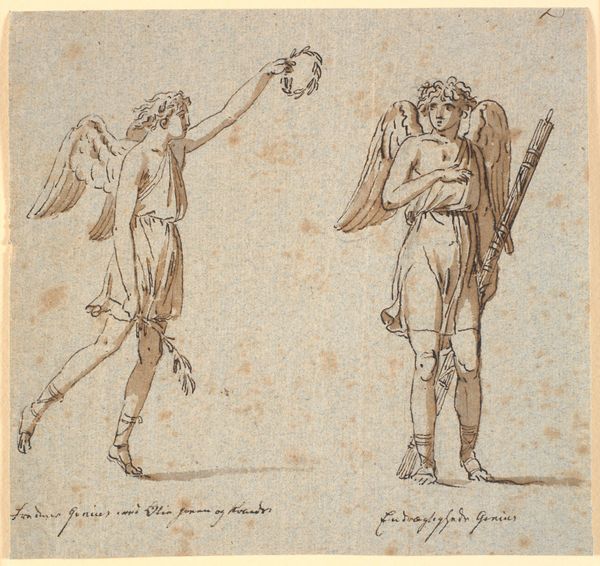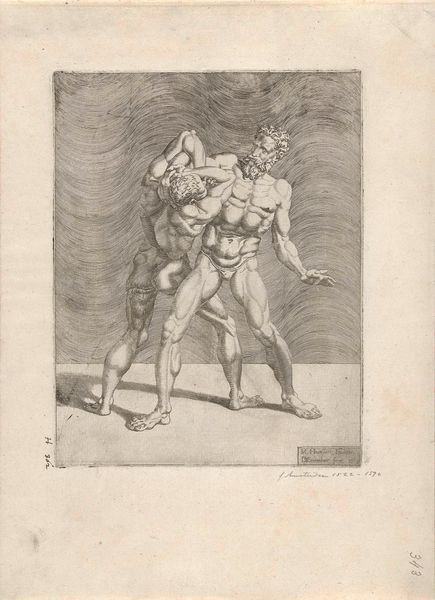
drawing, print, etching, paper
#
portrait
#
drawing
# print
#
etching
#
mannerism
#
figuration
#
paper
#
line
Copyright: National Gallery of Art: CC0 1.0
Curator: Looking at this etching, made by Giovanni Battista Bracelli, circa 1624, titled "From \"Bizzarie di varie Figure\", I'm immediately struck by its stark composition and bizarre, almost theatrical figures. Editor: It’s weirdly haunting, isn't it? The linear quality almost renders the figures as anatomical studies, or like diagrams. There's something unsettling in their incompleteness. Curator: Absolutely. Bracelli was working within a Mannerist tradition, which prized artifice and subjective vision. What is fascinating here is that his choice of etching allows for mass production and therefore a broader dissemination of such unconventional, potentially subversive, imagery. Consider the labor and skill involved in creating these precise lines and textures using acid. Editor: The material implications are certainly interesting. It challenges hierarchies—an etching, usually seen as more accessible, reproducing rather peculiar, almost grotesque forms, bringing them into public consumption in a way that a unique painting couldn’t. It speaks to the breakdown of traditional categories within art, perhaps even to a changing social landscape at the time. Who did these "bizzarie" serve? Curator: Exactly! The figures themselves present a political argument. Note how one appears 'bound' or contained, contrasting starkly with the anatomical correctness, of the second figure who remains unbound. This may relate to tensions within the institutions and powers of that era. These "various figures" reflect diverse socio-political classes perhaps on the cusp of upheaval and unrest. Editor: So the “bizarreness” becomes a vehicle for communicating and engaging with this landscape... Makes one wonder about the art market, and if pieces like these played a specific role in shaping a burgeoning artistic counter-narrative. How do you see contemporary exhibitions framing such works and prompting novel social critique now? Curator: These discussions prompt critical dialogue on our contemporary context that in itself is thought-provoking. I have certainly looked at the works in different light today, acknowledging how cultural narrative might intersect through materials and art practices.
Comments
No comments
Be the first to comment and join the conversation on the ultimate creative platform.
